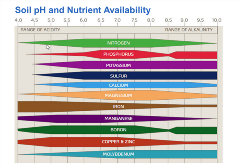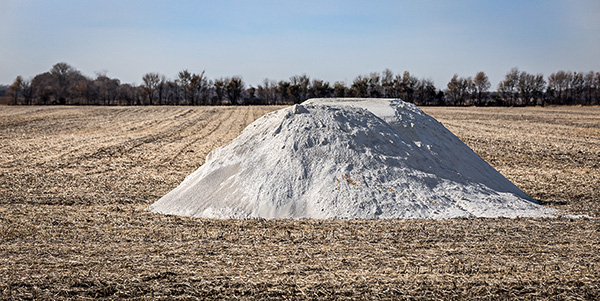AGRONOMICSUPPORT
YOU CAN TAKETO THE FIELD
Is Your pH Where It Needs To Be?

Soil pH is a measure of the acidity or alkalinity of soil. A soil pH of 7 is neutral, a pH below 7 is acidic and a pH above 7 is alkaline. A soil pH between 6.0 and 7.5 is optimum for most ag crops. Nutrient availability is influenced by soil pH, and macro and micronutrients are most available within the 6.0 – 7.5 range. Managing your soil pH to keep it in the ideal range will result in maximum efficiency of applied fertilizers, and nutrient deficiency symptoms can start to develop as soils become more acidic or alkaline. Nitrogen and phosphorous deficiencies can develop at both high and low soil pH. Potassium and sulfur deficiencies are more visible at a low pH, while iron deficiencies become more visible as pH rises above 7.
Microbial activity is also reduced in acidic soils, which can impact the breakdown of crop residue, decreased soil structure and negatively impact soybean inoculant activity. Herbicide activity and carryover can also be impacted by high or low soil pH. Always consult the label for specific details on this.
Neutralizing Acidic Soils
Applications of lime are a common practice to help neutralize acidic soils, and the coarseness of the lime particles has a direct impact on the reaction time of the lime. Pell lime is finely ground and is a preferred lime source when a “quick fix” is needed, especially on rented or leased ground. Incorporation can also provide a faster reaction and pH adjustment. Fall is generally the preferred window for lime applications.
Keeping soil pH as close to neutral as possible will have a positive impact on soil health and structure, as well as nutrient uptake efficiency. The result of this is maximized output on as many acres as possible and increased profitability for your farm.






Sales Agronomist